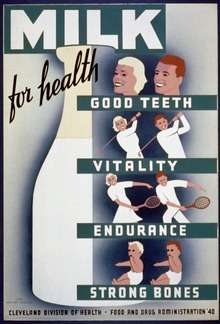
From a young age we're told that calcium is important for strong, healthy bones. As we reach menopause (the end of menstrual periods that occurs between 45-55 years), eating calcium-rich foods holds even greater importance as our body composition and hormone levels change. Making smart choices in terms of nutritious foods and a healthy lifestyle can help to optimise bone health and your enjoyment of life.
Why is bone health important?
Our bones provide the structure for our bodies, and allow us to move and carry out everyday processes. Reinforced with the mineral calcium, strong, healthy bones rely on a balanced diet and regular weight-bearing exercise to support the body [1]
Peak bone mass
‘Peak Bone Mass’ is reached in early adulthood, and describes the stage at which the skeleton has reached its full growth potential, and bones are at their thickest and strongest. The female sex hormone oestrogen plays a role in protecting bones by retaining bone strength.
The importance of bone health after menopause
Bone mass remains fairly stable during early adulthood; but come menopause these oestrogen levels drop, and the protective effects it has on bones are reduced. Subsequently, during menopause women tend to lose bone mass – at a rate of about 2-3% each year for the first 5 years of menopause, and then around 1% per year to the end of life. Adding to the increased bone loss, at this age there is a decline in calcium absorption in the gut, and an increase in calcium excretion through urine. [2] Due to the increased bone losses, postmenopausal women are at a greater risk of a condition of low bone density called osteoporosis. Translating literally to ‘porous bones,’ osteoporosis results in weakened bones and often, bone fracture. Consuming additional calcium is important in this life stage, and evidence shows that doing so can reduce the risk of bone fracture [3]
How much do I need?
The Recommended Dietary Intake (RDI) for women aged 51-70 increases from 1,000mg/day in young adulthood, to 1,300mg/day. Worryingly, it is estimated that most Australians consume only half of their recommended calcium intake, placing them at risk of weakened bones [4]
'Legendairy'
Dairy foods are the richest source of calcium. They are widely accessible and efficiently absorbed in the body, making them the best choice for ensuring your calcium needs are met [5] Current recommendations suggest women aged between 51-70 years consume 4 serves each day of foods from the dairy and alternatives group.


| Women | Recommended Dietary Intake (RDI) |
|---|---|
| 19-30 years | 1000mg/day |
| 31-50 years | 1000mg/day |
| 51-70 years | 1300mg/day |
| 71+ years | 1300mg/day |
A standard serve from this food group includes:
- 1 cup (250ml) fresh, UHT, powdered or buttermilk
- ½ cup (120ml) evaporated milk
- 2 slices (40g) hard cheese, such as cheddar
- ½ cup (200g) ricotta cheese
- ¾ cup (200g) yoghurt
- 1 cup (250ml) soy, rice or other drink with added calcium
Don't do dairy? Alternative sources of calcium

The following contain around the same amount of calcium as a serve of milk, yoghurt or cheese:
- 100g almonds
- 60g canned sardines
- ½ cup (100g) canned salmon with bones
- 100g firm tofu
- 3 tbsp (60g) tahini (Sesame seed paste)
- 2 tbsp (40g) chia seeds
- 300g bok choy
Other factors affecting bone health
Nutrition aside, there are a number of other considerations that can impact on bone health.
Weight bearing exercise

Physical activity plays an important role, both in the maintenance of bone health, and the prevention of losses. All exercise offers health benefits, but specific types of exercises, known as 'weight bearing,' are important for improving bone strength. Examples of these include:
- Power walking
- Jogging
- Netball
- Tennis
- Aerobics
- Zumba
- Lifting weights
Vitamin D intake
Important for calcium absorption and hardening of the bones, Vitamin D is only found in small amounts in food, and our main source is via a natural reaction of direct sunlight on our skin. [8] A healthy balance must be met to gain adequate sun exposure without damaging the skin.
Caffeine, alcohol
Both of these substances are known to interfere with calcium absorption and increase losses. Consumption of drinks like tea, coffee, soft drinks and alcohol should be limited to avoid negative affects [9]
Tips to cram in more calcium
.jpg)
- Snack on reduced fat milk, yoghurt and cheese
- Serve soups and curries with natural yoghurt
- Swap your lunchtime can of tuna for salmon with bones
- Add reduced fat milk powders to casseroles, soups and sauces
- Try tahini (sesame seed paste) instead of your usual peanut butter
- Make a homemade yoghurt based dip - tzatziki is a favourite.
Further reading
For more information:
References
- ↑ Better Health Channel (2012) retrieved from: http://www.betterhealth.vic.gov.au/bhcv2/bhcarticles.nsf/pages/Bones
- ↑ Sanders K, Nowson C, Kotowicz M, Briffa K, Devine A, Reid R. (2009). Calcium and bone health: position statement for the Australian and New Zealand Bone and Minderal Society, Osteoporosis Australia and the Endocrine Society of Australia. The Medical Journal of Australia. Retrieved from: https://www.mja.com.au/journal/2009/190/6/calcium-and-bone-health-position-statement-australian-and-new-zealand-bone-and.
- ↑ National Health and Medical Research Council. (2013). Calcium. Retrieved from: http://www.nrv.gov.au/nutrients/calcium
- ↑ National Health and Medical Research Council. (2013). Australian Dietary Guidelines 2013, p 4-24. Retrieved from: http://www.nhmrc.gov.au/_files_nhmrc/publications/attachments/n55a_australian_dietary_guidelines_summary_131014.pdf
- ↑ Dietitians Association of Australia. (2014). Calcium. Retrieved from: http://daa.asn.au/for-the-public/smart-eating-for-you/nutrition-a-z/calcium/
- ↑ National Health and Medical Research Council. (2013). Recommended number of serves for adults. Retrieved from: http://www.eatforhealth.gov.au/food-essentials/how-much-do-we-need-each-day/recommended-number-serves-adults
- ↑ Osteoporosis Australia. (2014). Exercise Retrieved from: http://www.osteoporosis.org.au/exercise
- ↑ Diamond et al. (2005). Vitamin D and adult bone health in Australian and New Zealand: a position statement. The Medical Journal of Australia. Retrieved from: http://www.mja.com.au/journal/2005/182/6/vitamin-d-and-adult-bone-health-australia-and-new-zealand-position-statement
- ↑ National Osteoporosis Foundation. (2014). Food and your bones. Retrieved from: http://nof.org/foods